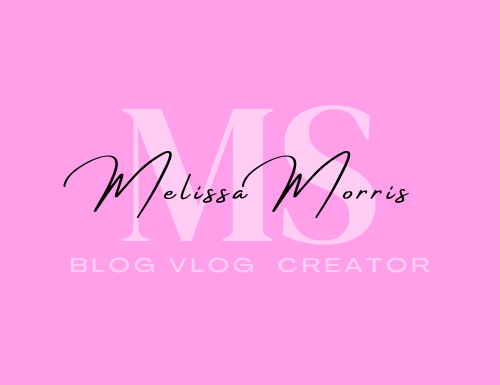This post may contain affiliate links which means we may receive a commission for purchases made through links. Read more on our Privacy Policy.
Table of Contents
Designing a beginner yoga sequence plan requires careful consideration to ensure that each session is engaging, beneficial,
and tailored to the needs of the participants.

A well-structured yoga class planner can be vital for yoga instructors, helping them organize their sessions efficiently and effectively.
Want to Learn More? About A Beginner Yoga Sequence plan. Here. Watch my YouTube videos for Free.
Benefits of A Beginner Yoga Sequence Plan
Using a yoga class planner offers several advantages:
- Consistency: Ensures uniformity in class structure, helping students follow a predictable routine.
- Progress Tracking: Allows instructors to monitor student progress and adjust difficulty levels accordingly.
- Time Management: Helps in efficiently allocating time to different segments of the class.
- Customization: Enables the creation of tailored sessions that address specific student needs and preferences.

Key Components of an Effective Beginner Yoga Sequence Plan
1. Class Objective and Theme
Every yoga class should have a clear objective and theme. The objective could be anything from enhancing flexibility, improving strength or focusing on mental relaxation. The theme might include elements like chakra balancing, mindfulness, or a seasonal focus.
2. Warm-Up Sequence
A warm-up is crucial to prepare the body for the yoga practice. It should be gentle and aim to increase blood flow to the muscles, gradually enhancing flexibility. Typical warm-up exercises include:
- Cat-Cow Stretches
- Neck and Shoulder Rolls
- Gentle Twists
3. Main Sequence
The main sequence forms the core of the class. It should be designed to meet the class objective and can include a mix of the following:
- Standing Poses: Such as Warrior I and II, Tree Pose, and Triangle Pose.
- Balancing Poses: Like Eagle Pose, Dancer’s Pose, and Half Moon Pose.
- Seated Poses: Including Forward Bends, Seated Twists, and Hip Openers.
- Backbends and Heart Openers: Such as Bridge Pose, Camel Pose, and Wheel Pose.
4. Cool Down and Relaxation
Cooling down is essential to help the body transition from an active state to a restful one. This section should include:
- Gentle Stretches: To release any remaining tension.
- Restorative Poses: Such as Child’s Pose and Legs-Up-The-Wall Pose.
- Savasana: Final relaxation to integrate the benefits of the practice.
5. Breathing Exercises (Pranayama)
Incorporating breathing exercises can significantly enhance the effectiveness of the yoga session. Techniques like Nadi Shodhana (alternate nostril breathing), Ujjayi (victorious breath), and Kapalabhati (skull shining breath) can be included.
6. Meditation and Mindfulness
Ending the session with a short meditation or mindfulness practice helps to center the mind and body. Guided meditations, body scans, or silent sitting can be effective.

Sample Beginner Yoga Sequence Plan
Here is a sample yoga class planner that can be used as a template:
Class Objective: Stress Relief and Relaxation
| Section | Activity | Duration |
|---|---|---|
| Introduction | Brief welcome and explanation of the class theme | 5 minutes |
| Warm-Up | Gentle stretches, Cat-Cow, Neck Rolls | 10 minutes |
| Main Sequence | – Standing Poses: Warrior I, II, Tree Pose | 30 minutes |
| – Seated Poses: Forward Bend, Seated Twist | ||
| – Backbends: Bridge Pose, Camel Pose | ||
| Cool Down | Gentle stretches, Child’s Pose, Legs-Up-The-Wall | 10 minutes |
| Breathing Exercise | Nadi Shodhana | 5 minutes |
| Meditation | Guided relaxation, Savasana | 10 minutes |
| Conclusion | Closing remarks and final thoughts | 5 minutes |
Advanced Tips for Creating an Engaging Beginner Yoga Sequence Plan
Personalization
Personalize your classes by considering the needs and preferences of your students. Regular feedback and adjustments based on their responses can greatly enhance their experience.
Incorporating Music and Ambiance
Select calming music and create a soothing ambiance to enhance the overall experience of your yoga class. Consider lighting, scents, and the overall environment.
Using Props
Incorporate yoga props like blocks, straps, and bolsters to make poses more accessible and comfortable for all students, regardless of their flexibility or strength levels.
Seasonal and Thematic Variations
Vary your class themes and sequences to align with seasonal changes or specific holidays. This keeps the classes fresh and interesting, encouraging students to attend regularly.
Diagram: Beginner Yoga Sequence Plan
A[Class Introduction] B[Warm-Up] C[Main Sequence] D[Cool Down] E[Breathing Exercise] F[Meditation]A well-crafted beginner yoga sequence plan is essential for delivering effective and engaging yoga sessions.
By focusing on clear objectives, structured sequences, and incorporating elements of personalization and ambiance, instructors can create a transformative experience for their students.
Use this guide to enhance your yoga classes and foster a deeper connection with your practice and your students.

FAQ
1. What is a good beginner yoga sequence to start with at home?
A great beginner yoga sequence typically starts with gentle poses that help you warm up and connect with your breath.
A simple plan might include:
Child’s Pose (Balasana) – to relax and center yourself
Cat-Cow Stretch (Marjaryasana-Bitilasana) – to warm up the spine
Downward-Facing Dog (Adho Mukha Svanasana) – to build strength and stretch
Low Lunge (Anjaneyasana) – to open the hips
Seated Forward Fold (Paschimottanasana) – to stretch the hamstrings
Bridge Pose (Setu Bandhasana) – to strengthen the back
Supine Twist – to release tension in the spine
Savasana (Corpse Pose) – to relax and restore
This sequence can be done in about 20–30 minutes and helps build flexibility, balance, and calm. Be sure to move slowly, listen to your body, and focus on your breath throughout.
Buy Yoga Membership online Canada. 5 ways to enjoy your practice
This post may contain affiliate links which means we may receive a commission for purchases made through links. Read more on our Privacy Policy.
Discover more from Ms. Melissa Morris
Subscribe to get the latest posts sent to your email.

